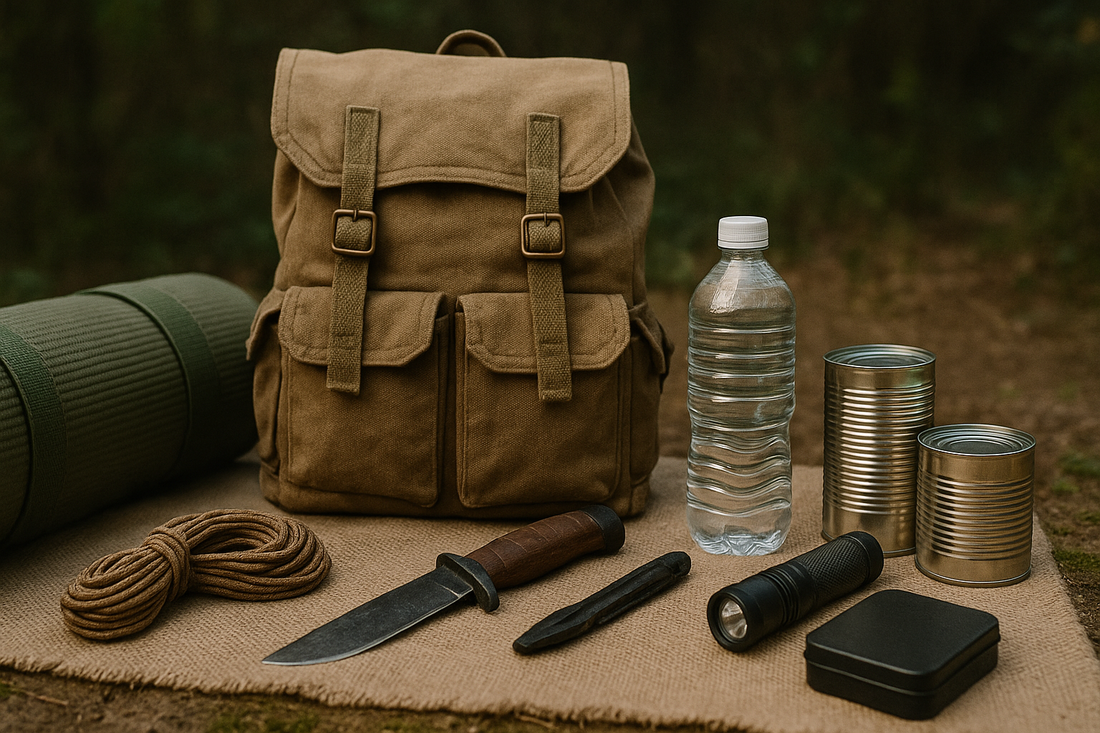
Survive
Survival success anywhere on Earth begins with three things: a clear understanding of your own starting point, a disciplined skill-building roadmap, and unwavering respect for nature; the outline below delivers all three—diagnostic questions to locate your baseline, a tiered curriculum that works from desert heat to alpine cold, universal field principles (mindset, water, fire, shelter, navigation, first aid), and a plain-language liability notice reminding readers that they alone are responsible for how they use this information.
1 · Quick Self-Diagnostic
Answer these questions before training; your responses shape every later decision.
| # | Question | Purpose |
|---|---|---|
| 1 | Region type (urban, rural, coastal, mountainous, arid, polar, etc.) | Dictates dominant hazards (e.g., flash floods vs. avalanches). |
| 2 | Climate profile (temperature ranges, rainfall/snow, storm frequency) | Determines water, shelter, and clothing priorities. |
| 3 | Current fitness level (sedentary, active, athletic) | Sets safe drill intensity to avoid injury. |
| 4 | On-hand gear (knife, first-aid kit, water filter, radio, etc.) | Reveals capability gaps for immediate correction. |
| 5 | Prior experience (camping, boondocking, teaching, first-aid classes) | Lets you skip what you already master and focus on true weaknesses. |
Why it matters: Agencies from FEMA to the Red Cross agree that honest self-assessment is the first step in any preparedness plan. (ready.gov, redcross.org)
2 · Three-Tier Curriculum Overview
Tier I – Foundations
- Mindset & Risk Awareness – Train calm decision-making through short stress drills; psychological resilience repeatedly proves more decisive than gear in SAR case studies. (redcross.org, northeast.newschannelnebraska.com)
- Core Kit Setup – Build (or audit) a 72-hour kit covering water, food, shelter, first aid, comms, and multi-use tools. (ready.gov)
- Safety Fundamentals – Learn basic first aid plus how Good-Samaritan protections generally work so you can render help without fear of civil liability (laws differ—research your jurisdiction). (mycprcertificationonline.com, emergencyfirstresponse.com)
Tier II – Practical Skills
- Water Procurement & Purification – Practice boiling, chemical disinfection, and filtration; follow CDC guidance that boiling neutralizes microbes but not chemical toxins. (cdc.gov, cdc.gov)
- Fire & Heat Control – Master ferro-rod ignition, feathersticks, and fatwood so you can light tinder even in rain-soaked conditions. (youtube.com)
- Shelter & Thermoregulation – Drill both hypothermia prevention (layering, windproof barriers) and heat-stress mitigation (shade, hydration, work/rest cycles). (princeton.edu, cdc.gov)
- Navigation – Combine traditional map-and-compass with offline GPS apps; redundancy prevents single-point failure.
- Vehicle & Remote-Work Contingencies – Stock an automotive kit (first aid, jumper cables, radios, blankets) for breakdowns or boondocking stopovers. (redcross.org)
Tier III – Scenario Labs
- 72-Hour Blackout (Heat-Wave / Cold-Snap variants) – Manage perishables, indoor temperature, and communications without grid power.
- Extended Grid Failure (7–30 days) – Rotate food stores, sanitize collected water, maintain morale.
- Remote Wilderness Bivouac – Execute a full camp cycle while following Leave-No-Trace principles. (lnt.org)
- Urban Evac & Shelter-in-Place Drills – Rehearse alternate routes and improvised indoor safety (e.g., interior rooms for tornadoes or civil unrest).
3 · Universal Survival Principles
- 3.1 Mindset & Decision-Making
Stay Calm, Think, Act: Stress inoculation (breathing, visualization) reduces panic-driven errors that wilderness studies link to fatalities. (redcross.org)
- 3.2 Water
Rule of Three: You may die from dehydration in as little as three days; carry or locate water first.
Treatment Hierarchy: Clear & boil → filter → chemical (chlorine dioxide/iodine) → last resort: solar disinfection; boiling alone cannot remove fuel or chemical contaminants. (cdc.gov)
- 3.3 Shelter & Temperature
Cold: Layer clothing, keep dry, fuel with carbs; hypothermia risk persists above freezing in wind and rain. (princeton.edu)
Heat: Schedule work at dawn/dusk, hydrate, rest in shade; CDC lists heat exhaustion signs—treat early to avoid heatstroke. (cdc.gov)
- 3.4 Fire
Prepared Tinder: Carry cotton/vaseline or commercial tabs; scrape inner bark/shavings when wood is wet. (youtube.com)
Safety & Regulation: Check local restrictions; US Forest Service warns most wildfires are human-caused—sometimes all open flames are banned. (fs.usda.gov, gacc.nifc.gov)
- 3.5 Navigation & Communication
Redundancy: Pair digital maps with paper and compass; lightweight emergency beacons or whistles outperform cell phones where coverage is absent.
- 3.6 First Aid & Legal Protection
Scope of Training: Render aid within your knowledge; obtain consent when possible; Good Samaritan statutes generally shield well-intentioned helpers acting reasonably. (mycprcertificationonline.com, en.wikipedia.org)
- 3.7 Ethics & Environment
Leave-No-Trace: Plan ahead, travel on durable surfaces, pack out waste, minimize campfire impacts, respect wildlife, keep noise low, and be considerate of others. (lnt.org, lnt.org)
4 · Liability Disclaimer
Educational Use Only: The techniques, drills, and scenarios presented here are offered “as-is” for informational purposes. Wilderness travel, emergency response, and survival training carry inherent risks—including severe injury or death. By reading, viewing, or implementing any material from this site, you accept full responsibility for your actions and agree that the author bears no liability whatsoever for any loss, harm, or legal consequences that may result. Always seek qualified instruction, obey local laws, and exercise prudent judgment.
5 · Your Next Steps
- Fill out the diagnostic table with your real data.
- Build or audit a 72-hour kit using Tier I guidelines.
- Schedule one low-risk drill (e.g., the 30-minute mindset stress test) this week and record what you learn.
- Commit to progressive practice: Move methodically from Tier I to Tier III—mastery is cumulative.
- Stay calm, think clearly, and train deliberately—the safest path to resilience in any climate or region.

